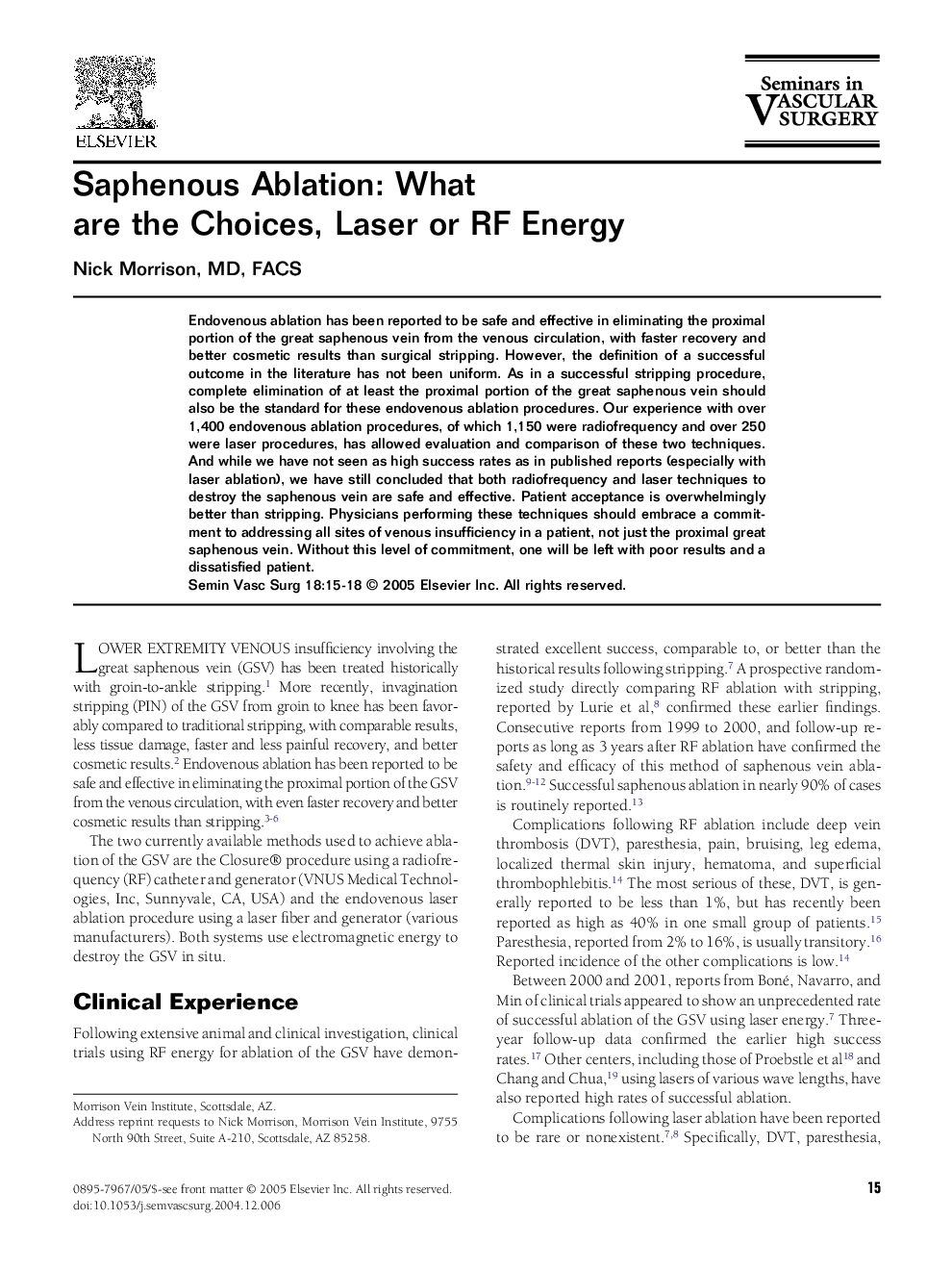| Article ID | Journal | Published Year | Pages | File Type |
|---|---|---|---|---|
| 9184813 | Seminars in Vascular Surgery | 2005 | 4 Pages |
Abstract
Endovenous ablation has been reported to be safe and effective in eliminating the proximal portion of the great saphenous vein from the venous circulation, with faster recovery and better cosmetic results than surgical stripping. However, the definition of a successful outcome in the literature has not been uniform. As in a successful stripping procedure, complete elimination of at least the proximal portion of the great saphenous vein should also be the standard for these endovenous ablation procedures. Our experience with over 1,400 endovenous ablation procedures, of which 1,150 were radiofrequency and over 250 were laser procedures, has allowed evaluation and comparison of these two techniques. And while we have not seen as high success rates as in published reports (especially with laser ablation), we have still concluded that both radiofrequency and laser techniques to destroy the saphenous vein are safe and effective. Patient acceptance is overwhelmingly better than stripping. Physicians performing these techniques should embrace a commitment to addressing all sites of venous insufficiency in a patient, not just the proximal great saphenous vein. Without this level of commitment, one will be left with poor results and a dissatisfied patient.
Related Topics
Health Sciences
Medicine and Dentistry
Cardiology and Cardiovascular Medicine
Authors
Nick (FACS),
